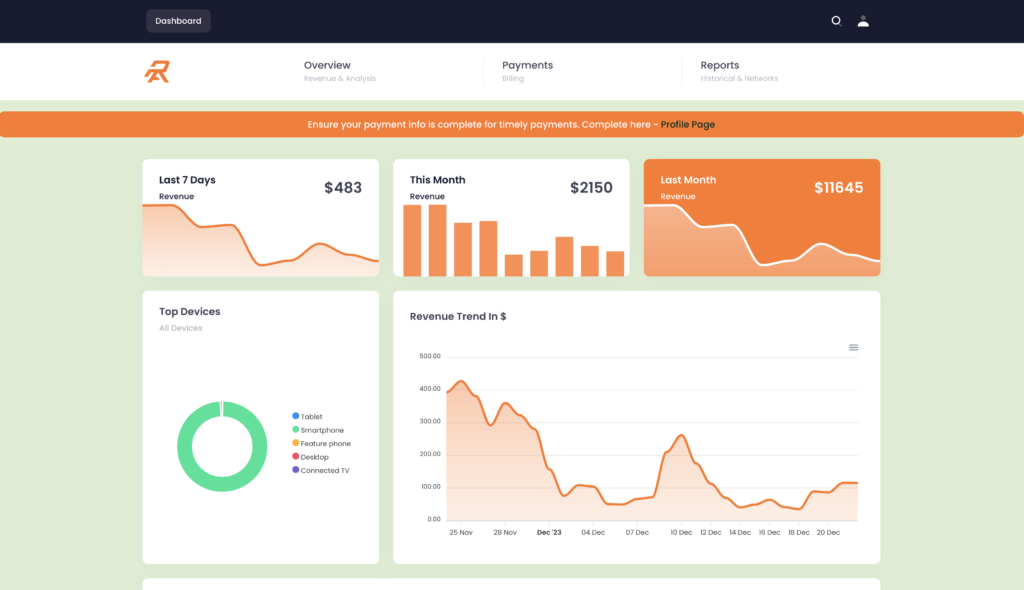In the world of advertising technology (ad tech), agency trading desks play a crucial role. They help brands reach their target audiences effectively and efficiently. This article will explore what agency trading desks are, how they operate, and their significance in the advertising landscape.
What is an Agency Trading Desk?
An agency trading desk is a specialized division within an advertising agency that focuses on programmatic buying. Programmatic buying refers to the automated process of purchasing ad space in real-time. This allows agencies to target specific audiences based on data and analytics rather than relying solely on traditional media buying methods.
Agency trading desks are equipped with advanced technology and tools that facilitate data-driven decision-making. They analyze vast amounts of data to determine the best placements for ads, ensuring that they reach the right people at the right time.
How Do Agency Trading Desks Work?
ATDs operate on a few key principles:
1. Data-Driven Approach
The primary strength of an agency trading desk lies in its ability to harness data. They collect information from various sources, such as user behavior, demographics, and interests. This data helps them create detailed audience profiles, enabling precise targeting.
2. Real-Time Bidding (RTB)
Real-time bidding is a critical component of how ATDs function. When a user visits a website, an auction takes place in milliseconds to determine which ad will be displayed. Agency trading desks participate in these auctions, bidding for ad space based on their data analysis. This process allows advertisers to purchase impressions only when they are most likely to yield a return on investment.
3. Optimization
After the ads are running, agency trading desks continuously monitor their performance. They analyze metrics such as click-through rates, conversion rates, and engagement levels. This ongoing analysis allows them to make real-time adjustments to campaigns, thus optimizing ad placements and budgets to achieve better results.
Benefits of Agency Trading Desks
1. Improved Targeting
One of the most significant advantages of using an agency trading desk is improved targeting. By leveraging data, agencies can reach specific audiences with tailored messages. This precision further leads to higher engagement and conversion rates, ultimately enhancing the effectiveness of ad campaigns.
2. Cost Efficiency
ATDs enable advertisers to allocate their budgets more efficiently. Since they can target specific audiences and adjust campaigns in real-time, advertisers can reduce wasted spend on ads that may not resonate with viewers. This cost-effectiveness is particularly beneficial for brands looking to maximize their advertising budgets.
3. Transparency
Transparency is a growing concern in the advertising industry. ATDs offer clearer insights into where ad dollars are being spent and how campaigns are performing. Advertisers can see the effectiveness of their investments, helping them make informed decisions for future campaigns.
4. Access to Premium Inventory
ATDs often have relationships with various publishers and ad exchanges. This access allows them to secure premium ad inventory that might not be available through traditional channels. By tapping into this inventory, advertisers can enhance their brand visibility and reach.
Challenges Facing Agency Trading Desks
While agency trading desks provide numerous benefits, they also face some challenges:
1. Complexity of Technology
The technology behind ATDs can indeed be complex. Agencies must stay updated with the latest tools and trends in programmatic advertising in order to remain competitive. This requires ongoing training as well as investment in technology, which can be a barrier for smaller agencies.
2. Data Privacy Concerns
As data collection and usage become more scrutinized, agency trading desks must navigate privacy regulations such as GDPR and CCPA. They need to ensure that they are compliant while still effectively targeting audiences. Balancing privacy with effective marketing strategies is an ongoing challenge.
3. Market Competition
The rise of digital advertising has led to increased competition among agencies. As more players enter the market, standing out indeed becomes more difficult. Agency trading desks need to differentiate themselves through innovative strategies as well as superior data analytics.
The Future of Agency Trading Desks
As the advertising landscape continues to evolve, agency trading desks will play an increasingly important role. Emerging technologies like artificial intelligence (AI) and machine learning are set to enhance the capabilities of these desks, allowing for even more precise targeting and automation.
Moreover, as consumers become more discerning about their online experiences, agency trading desks will need to prioritize delivering relevant and engaging ads. This focus on user experience will be crucial for maintaining brand loyalty and trust.
Conclusion

Agency trading desks indeed are vital players in the ad tech ecosystem. By leveraging data and technology, they provide brands with improved targeting, cost efficiency, and also transparency. While challenges exist, the future looks promising as these desks adapt to new trends and technologies. For advertisers looking to maximize their impact in the digital space, understanding and utilizing ATDs is indeed essential.
Frequently Asked Questions (FAQs)
1. What is the primary function of an agency trading desk?
Agency trading desks specialize in programmatic advertising, using data and technology in order to automate the buying of ad space in real-time.
2. How do they improve targeting?
They analyze extensive data on user behavior and demographics in order to create detailed audience profiles, enabling precise and effective ad targeting.
3. What are the benefits of using an agency trading desk?
Benefits include improved targeting, cost efficiency, greater transparency in ad spending, and also access to premium ad inventory.
4. What challenges do they face?
Challenges include the complexity of technology, data privacy concerns, as well as increased competition in the digital advertising market.


